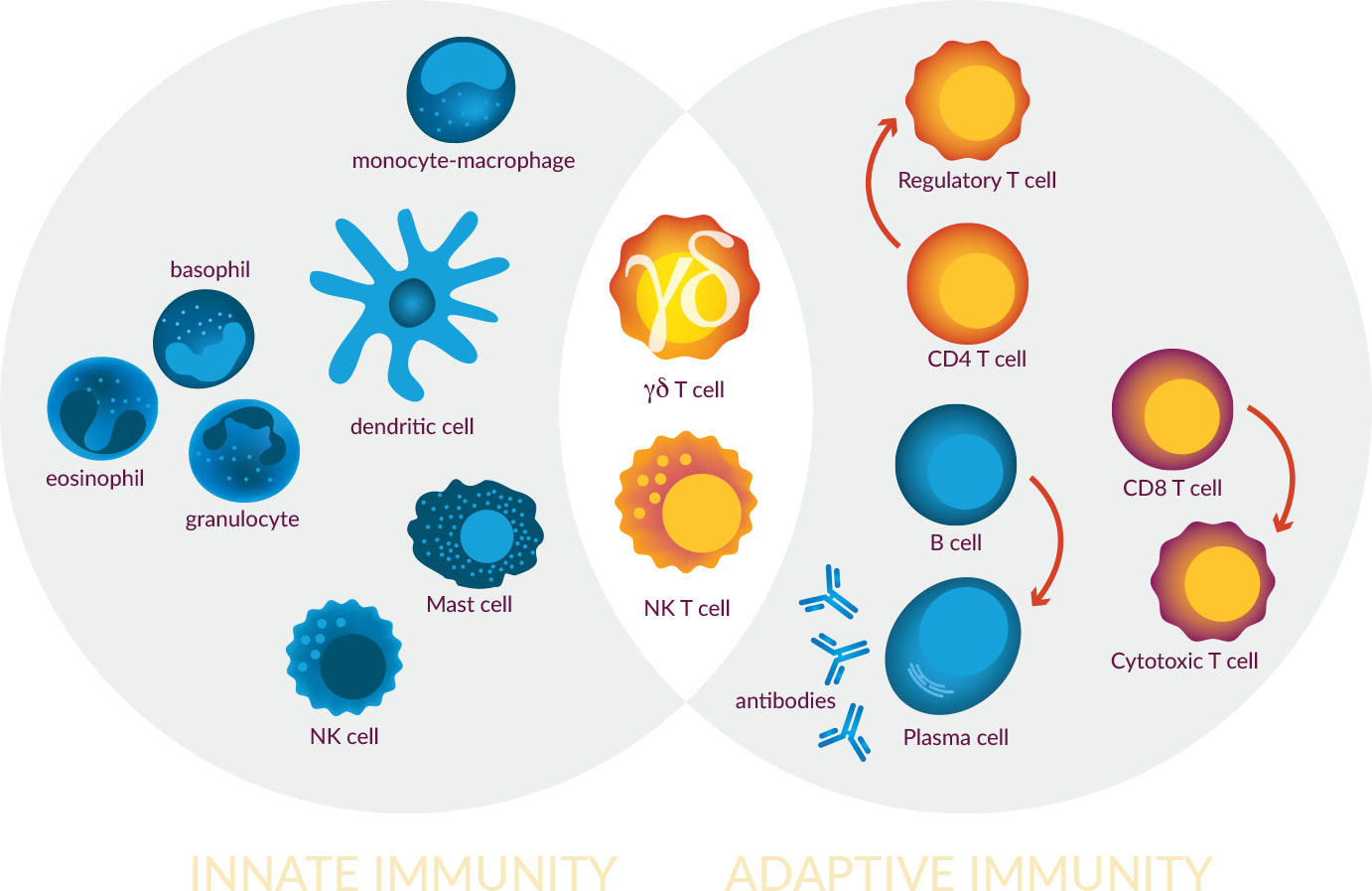Vγ9Vδ2 (Vgamma9 Vdelta2) T cells belong to the first line of defense against cancer
and have the potential to elicit deep and durable responses in the clinic
Vγ9Vδ2 (Vgamma9 Vdelta2) T cells are the largest γδ (gamma delta) T cell subpopulation in healthy adults. They are naturally occurring cells in the human immune system that are endowed with a tumor recognition mechanism, allowing them to specifically recognize and kill cells under stress, such as cancerous cells, while leaving healthy cells unharmed.
In addition, Vγ9Vδ2 T cells have properties of both the innate and adaptive immune systems, enabling them to serve as a functional bridge between these two critical systems to impact tumor killing. As such, not only do they have the capability to be activated for immediate and potent killing of tumor cells, they also have the potential to contribute to a cascade response in which they trigger innate and adaptive immune cells through cytokine release and antigen presentation. This may induce immunological memory and result in not only potent, but also durable responses.

